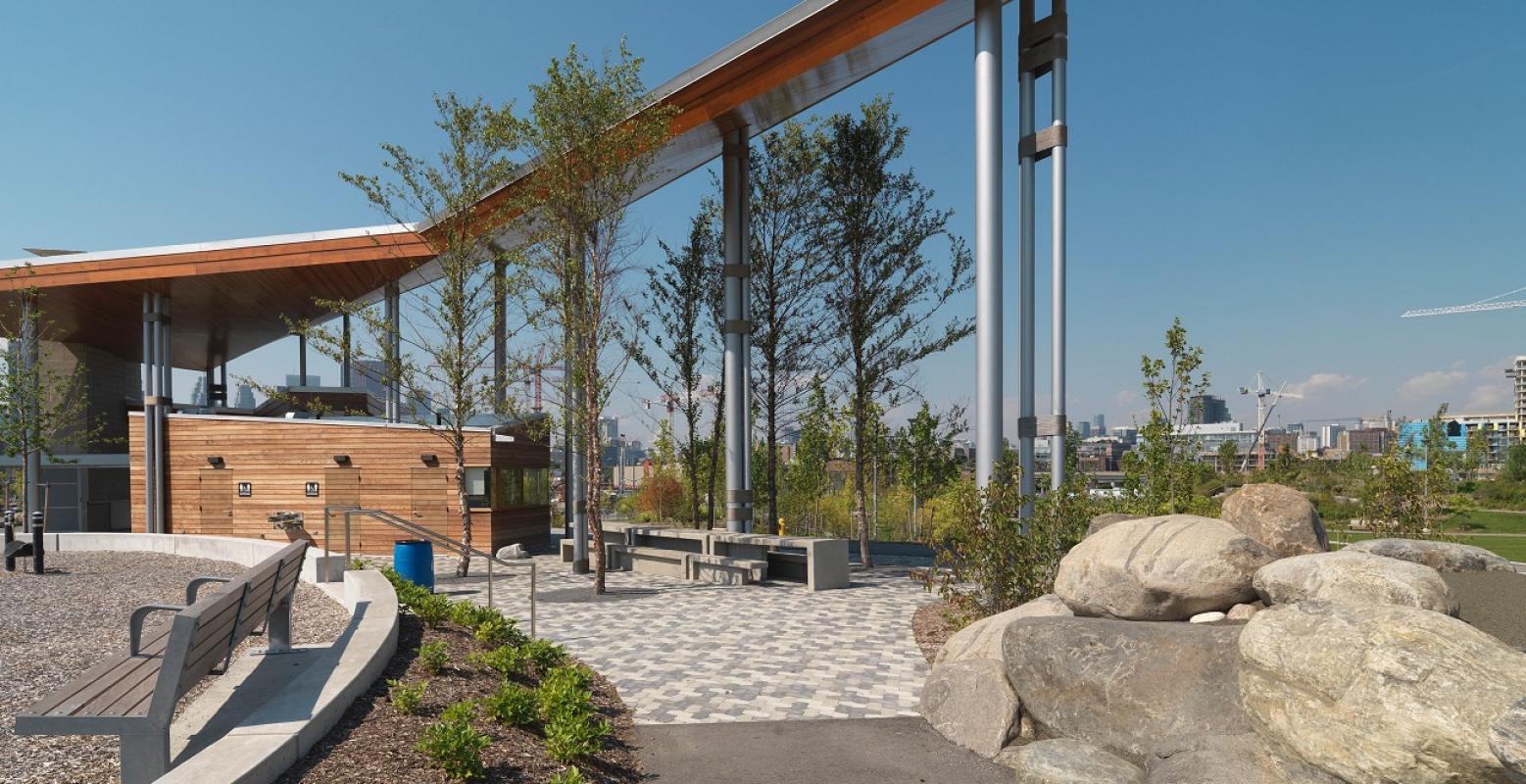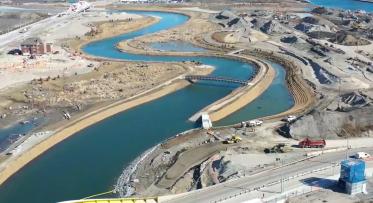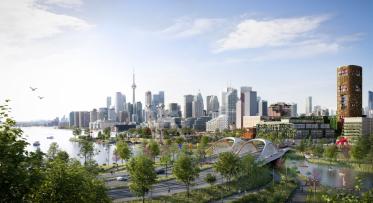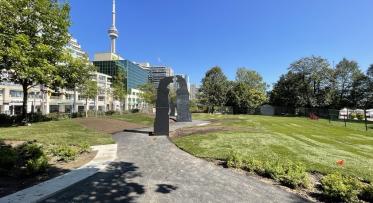Corktown Common, Toronto's latest waterfront park, to open June 28
June 26, 2013, Toronto, ON—Corktown Common, Waterfront Toronto’s newly named park in the West Don Lands, will open to the public on June 28. A key component of the revitalization of the area, Corktown Common is destined to become the heart of this emerging new waterfront community.
Great parks and public spaces are a vital part of the renewal of Toronto’s waterfront. Since 2004, Waterfront Toronto has opened 20 new or improved parks or public spaces.
At 7.3 hectares (18 acres) Corktown Common, formerly known as Don River Park, is the largest park in the area. Innovatively positioned atop the flood protection landform that has removed the flood risk for 210 hectares (518 acres) of prime Toronto real estate, including part of Toronto’s financial district, Corktown Common is a creative use of vital infrastructure and another example of Waterfront Toronto’s approach to revitalization. The park also capitalizes on the unique landscape to open sightlines to the Toronto skyline, the Don River and beyond.
Toronto and East York Community Council approved Corktown Common as the new name for the park on June 18. Corktown Common was chosen by the public through Name That Park, a six-week online naming contest sponsored by Waterfront Toronto and The Grid.
“We’re very pleased that this beautiful new park has a name that represents the idea that public spaces belong to everyone,” said John Campbell, President and CEO of Waterfront Toronto. “Parks and public spaces help create a sense of identity and place and are critical to the development of new neighbourhoods. Corktown Common is a key part of the transformation of the area from former industrial lands into a beautiful, sustainable and inclusive mixed-use community.”
Corktown Common offers something for everyone. The playgrounds, splash pad, athletic field and large central lawn can be used for informal gatherings or organized activities. The flexible outdoor space, tables, benches, bbq and fireplace create welcoming spots for the community to meet and socialize.
With more than 700 trees and thousands of shrubs, groundcovers, and aquatic plants, Corktown Common is a diversely planted habitat with ecological richness that will encourage biodiversity and a healthy forested area within the park. The large marsh, which is an integral part of the onsite stormwater management system, is already home to birds, bugs, frogs and ducks.
The practical needs of the park are well served by the striking and sustainable pavilion at the play hill. The park’s washrooms, small management office, stormwater management equipment and utility space are located within the pavilion, and in keeping with Waterfront Toronto’s sustainable building approach, solar panels have been included on the pavilion to supplement onsite power needs.
Corktown Common is located between Bayview Avenue and the GO/CN railroad lines, from King Street to the rail corridor in the south in the West Don Lands. The West Don Lands, a 32 hectare (80 acre) site being transformed from former industrial lands into a sustainable, mixed-use, pedestrian-friendly, riverside community, is one of the first communities being developed as part of waterfront revitalization.
The public can access Corktown Common from Bayview Avenue at Lower River Street or from the Don Valley Trail at the Bala Underpass. The park cannot be accessed by car and parking is not available. Corktown Common will be open from the end of June until early September. In order to complete construction of the eastern, river side of the park, the park will close for the winter and reopen in spring 2014.
Designed and built as part of the revitalization of Toronto’s waterfront, ownership of Corktown Common will be transferred to the City of Toronto when complete. Once transferred, the park will be operated and maintained by the Parks, Forestry and Recreation Department.
Waterfront Toronto
The Governments of Canada and Ontario and the City of Toronto created Waterfront Toronto to oversee and lead the renewal of Toronto’s waterfront. Public accessibility, design excellence, sustainable development, economic development and fiscal sustainability are the key drivers of waterfront revitalization.
-30-




